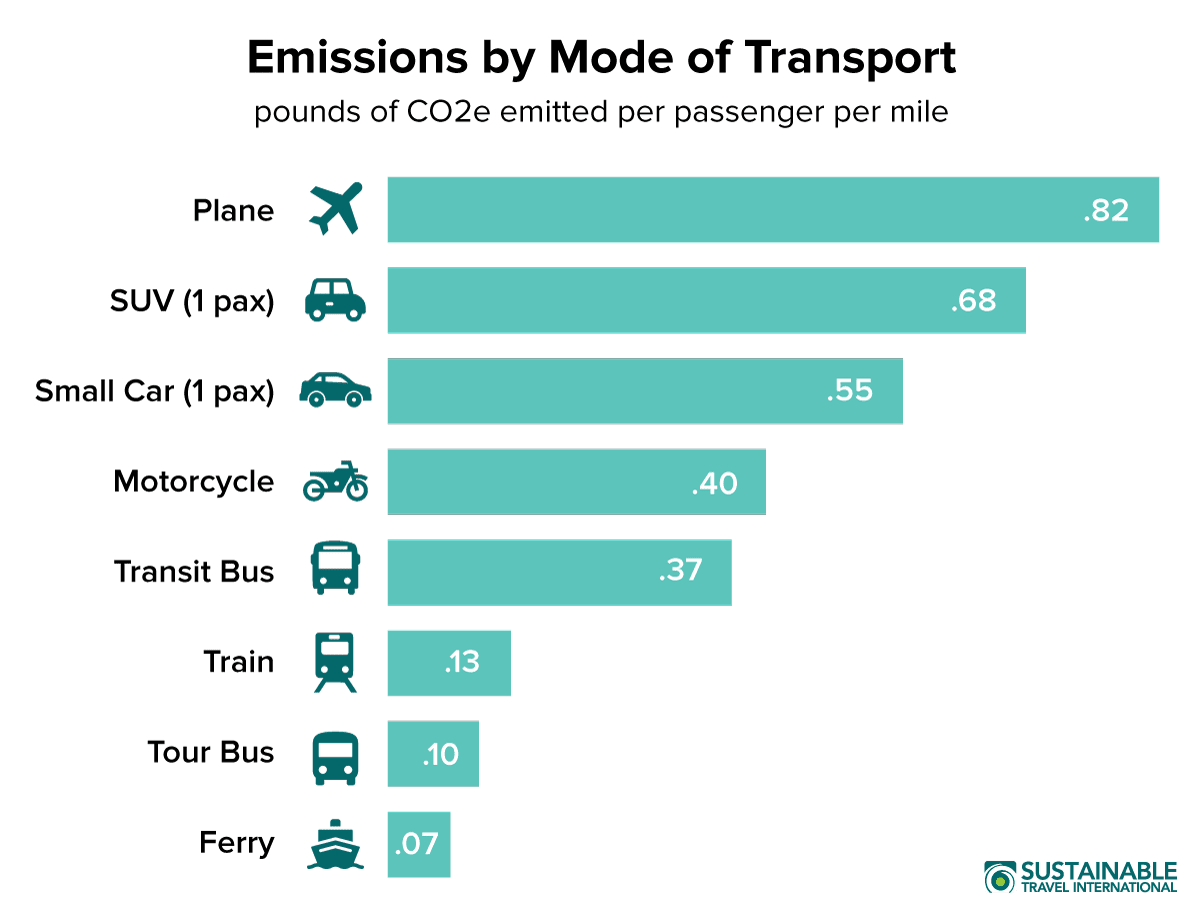Eco-tourism transportation has evolved towards sustainability, with a shift from traditional modes of transportation to more sustainable alternatives. Today, eco-tourists have access to options such as electric vehicles, bicycles, hiking trails, and low-impact boats. These modes of transportation allow visitors to explore nature responsibly while minimizing their carbon footprint and preserving fragile ecosystems. Popular modes of transportation in eco-tourism include cycling, hiking, and kayaking or canoeing. These options not only minimize the environmental impact but also provide opportunities for visitors to fully immerse themselves in the natural surroundings. The evolution of eco-tourism transportation is driven by a growing understanding of the need to protect the environment and reduce greenhouse gas emissions.
Key Takeaways:
- Eco-tourism transportation aims to minimize the environmental impact of travel and promote sustainable practices.
- Alternative modes of transportation, such as cycling or walking tours, can reduce carbon emissions and provide a more immersive experience for travelers.
- Using electric or hybrid vehicles can significantly reduce air pollution and noise levels in eco-tourism destinations.
- Efficient public transportation systems can help reduce congestion and promote the use of shared transport options among tourists.
- Collaboration between tourism operators, local communities, and transportation providers is essential for implementing eco-friendly transportation initiatives.
Evolution of Eco-Tourism Transportation: A Sustainable Journey
Eco-tourism transportation has come a long way in its evolution towards sustainability. In the early days, eco-tourists relied on traditional modes of transportation such as cars and buses to explore natural areas. However, as awareness about the environmental impact of these modes of transportation grew, there was a shift towards more sustainable alternatives.
Today, eco-tourists have access to a wide range of transportation options that minimize their carbon footprint and preserve the natural beauty they seek to experience. These include electric vehicles, bicycles, hiking trails, and even low-impact boats for water-based excursions. The evolution of eco-tourism transportation has been driven by a growing understanding of the need to protect fragile ecosystems and reduce greenhouse gas emissions.
Popular Modes of Transportation in Eco-Tourism: Exploring Nature Responsibly
When it comes to exploring nature responsibly, eco-tourists have several popular modes of transportation at their disposal. One such mode is cycling. Bicycles are not only environmentally friendly but also allow visitors to immerse themselves fully in the natural surroundings. Many eco-tourist destinations offer bike rentals or have dedicated bike paths that provide safe and scenic routes for cyclists.
Hiking is another popular mode of transportation in eco-tourism. It allows visitors to get up close and personal with nature while minimizing their impact on the environment. Hiking trails are often well-maintained and designed to showcase the unique flora and fauna of an area.
For those who prefer water-based adventures, kayaking or canoeing can be an excellent option. These low-impact watercraft allow eco-tourists to explore rivers, lakes, and coastlines without disturbing sensitive habitats or wildlife.
Sustainable Transportation in Eco-Tourism: Preserving the Environment on the Move
Sustainable transportation plays a vital role in eco-tourism by minimizing the negative impact on the environment and preserving natural resources. Electric vehicles (EVs) have emerged as a popular choice for eco-tourists due to their zero-emission nature. EV charging stations are being installed at eco-lodges and tourist destinations, enabling visitors to explore without contributing to air pollution or noise pollution.
Another sustainable transportation option is the use of hybrid vehicles, which combine an internal combustion engine with an electric motor. These vehicles offer improved fuel efficiency and reduced emissions compared to traditional gasoline-powered cars. Some eco-tourist destinations have even implemented shuttle services using hybrid buses to transport visitors between attractions.
Additionally, public transportation systems such as buses and trains can play a significant role in sustainable eco-tourism transportation. By encouraging visitors to utilize these existing infrastructure, it reduces the need for private vehicles and promotes shared transportation options that are more environmentally friendly.
The Benefits of Electric Vehicles in Eco-Tourism Transportation: Driving Towards a Greener Future
Electric vehicles (EVs) have gained significant attention in the eco-tourism industry due to their numerous benefits for both travelers and the environment. One of the primary advantages of EVs is their zero tailpipe emissions, resulting in cleaner air quality and reduced carbon footprint. This makes them an ideal choice for exploring ecologically sensitive areas where preserving air quality is crucial.
In addition to environmental benefits, EVs also offer cost savings for eco-tourists. Charging an EV is generally cheaper than refueling a conventional vehicle with gasoline, leading to lower travel expenses. Many eco-lodges and tourist attractions now provide EV charging stations, making it convenient for travelers to recharge their vehicles while enjoying their stay.
Furthermore, EVs are known for their quiet operation, which enhances the overall eco-tourism experience. The absence of engine noise allows visitors to fully immerse themselves in the natural soundscape and wildlife encounters without disturbance. This creates a more serene and authentic experience while exploring nature.
Reducing Carbon Emissions through Eco-Tourism Transportation: Paving the Way for a Cleaner Planet
Eco-tourism transportation plays a crucial role in reducing carbon emissions and paving the way for a cleaner planet. By choosing sustainable modes of transportation such as electric vehicles, bicycles, or public transportation, eco-tourists can significantly minimize their carbon footprint.
Electric vehicles, in particular, have been identified as one of the most effective ways to reduce carbon emissions in transportation. As EV technology continues to advance and charging infrastructure expands, more eco-tourists are opting for electric vehicles as their primary mode of transportation. This shift away from fossil fuel-powered vehicles is essential for achieving global climate goals and combating climate change.
In addition to individual choices, collaborations between eco-lodges, tour operators, and local governments are also crucial in promoting low-carbon transportation options. By working together to develop sustainable transportation networks and infrastructure, destinations can ensure that eco-tourists have easy access to environmentally friendly travel options.
Challenges and Limitations of Eco-Friendly Transportation in Eco-Tourism: Navigating the Roadblocks to Sustainability
While eco-friendly transportation options have made significant progress in eco-tourism, there are still challenges and limitations that need to be addressed on the road towards sustainability. One major challenge is the availability of charging infrastructure for electric vehicles. Although EV charging stations are becoming more common at popular tourist destinations and eco-lodges, there is still a need for further expansion to ensure convenient access for eco-tourists.
Another limitation is the lack of public transportation options in some remote or rural eco-tourism destinations. While urban areas often have well-developed public transportation systems, accessing natural and remote areas may require private vehicles or specialized transportation services. This can pose a challenge for eco-tourists who are conscious of their carbon footprint.
Furthermore, the cost of sustainable transportation options can be a barrier for some eco-tourists. Electric vehicles, bicycles, and other eco-friendly modes of transportation may have higher upfront costs compared to traditional options. Overcoming this financial barrier through incentives or subsidies can help make sustainable transportation more accessible to a wider range of travelers.
The Role of Public Transportation in Promoting Sustainable Travel for Eco-Tourists: Connecting Communities and Conservation
Public transportation plays a crucial role in promoting sustainable travel for eco-tourists by connecting communities and conservation areas. By utilizing existing public transportation systems such as buses and trains, eco-tourists can reduce their reliance on private vehicles and contribute to lower carbon emissions.
Public transportation networks can be designed to serve popular eco-tourism destinations, ensuring that visitors have convenient access to these areas without the need for personal vehicles. Shuttle services or dedicated bus routes can transport travelers between attractions, reducing traffic congestion and minimizing environmental impact.
In addition to reducing carbon emissions, public transportation also fosters community engagement and supports local economies. By using public transit, eco-tourists have the opportunity to interact with local residents and experience the culture and traditions of the destination. This creates a more immersive travel experience while also benefiting local businesses that cater to public transport users.
Incorporating Sustainable Transportation Options in Eco-Lodges and Resorts: Enhancing the Guest Experience with Responsible Mobility
Eco-lodges and resorts play a significant role in promoting sustainable transportation options by incorporating responsible mobility into their guest experience. By providing guests with access to eco-friendly transportation alternatives, these accommodations can enhance the overall sustainability of eco-tourism.
One way eco-lodges and resorts can promote sustainable transportation is by offering bicycle rentals or loaner bikes for guests. This allows visitors to explore the surrounding areas while minimizing their carbon footprint. Additionally, eco-lodges can provide information on nearby hiking trails or walking paths, encouraging guests to engage in low-impact activities that showcase the natural beauty of the destination.
Furthermore, some eco-lodges are investing in electric vehicle charging infrastructure to accommodate guests who drive electric cars. By offering convenient charging stations, these accommodations make it easier for eco-tourists to choose sustainable transportation options without sacrificing convenience.
Successful Initiatives Improving Eco-Tourism Transportation: Inspiring Change for a Greener Adventure
Several successful initiatives have been implemented to improve eco-tourism transportation and inspire change towards a greener adventure. One such initiative is the development of electric bike-sharing programs in eco-tourist destinations. These programs allow visitors to rent electric bicycles for short trips, reducing reliance on traditional vehicles and promoting sustainable mobility.
Another successful initiative is the integration of renewable energy sources into public transportation systems. Some cities have introduced electric buses powered by solar energy or other renewable sources, further reducing carbon emissions associated with public transit.
In addition, partnerships between tour operators and local conservation organizations have been instrumental in implementing sustainable transportation solutions. These collaborations often involve the use of low-emission vehicles or alternative modes of transport such as kayaks or electric boats for guided tours, ensuring minimal impact on fragile ecosystems.
In conclusion, eco-tourism transportation plays a crucial role in promoting sustainable travel and preserving the environment. By adopting greener alternatives such as electric vehicles, bicycles, and public transportation, we can reduce carbon emissions and minimize the negative impacts of tourism on local ecosystems. It is essential for both travelers and tourism operators to prioritize eco-friendly transportation options to ensure a more sustainable future for our planet.
What is the meaning of eco transportation?
Sustainable transportation refers to affordable and energy-efficient modes of transport that have low or zero emissions. This includes electric and alternative-fuel vehicles, as well as the use of domestic fuels. The advantages of sustainable transportation in the United States include savings on fuel and vehicle costs.
Which is an eco-friendly transport?
Green public transportation options such as electric trains, trams, and buses offer the benefits of environmentally friendly vehicles and sustainable transportation options. Other low-impact transportation choices include cycling, using human-powered vehicles, and animal-powered transport.
What is sustainability in transportation?
Sustainable transportation refers to the ability to meet the transportation needs of a community in a way that minimizes harm to the environment and does not hinder future generations’ mobility needs.
What is an example of green travel?
One option to avoid flying is to choose destinations that are located close to each other. For instance, you can travel from the USA to Argentina without needing to take a flight. Instead, you can utilize buses, boats, or trains to cross the borders. The same applies to exploring countries within Europe and Southeast Asia.
What is an example of ecotourism in Canada?
Popular destinations for both international tourists and Canadians include protected areas like Banff National Park, Jasper National Park of Canada, and Waterton Lakes. Canada’s extensive land area makes it an ideal ecotourism destination.
What are the 3 main principles of ecotourism?
Ecotourism is described by three primary attributes: being centered around nature, promoting environmental education, and practicing sustainable management.





